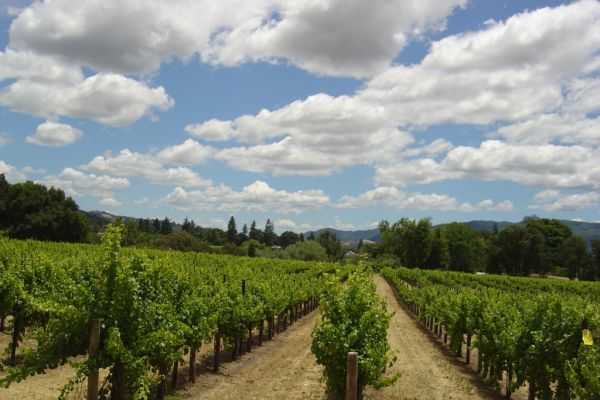As Italy's autumn grape harvest begins, winemakers are braced for a sharp drop in output after a rampant fungus ruined vines, thriving on drought followed by torrential spring rain.
The plasmopara viticola fungus, which causes a disease named grape downy mildew, destroyed vines in many Italian regions and will result in a 12% production loss nationwide versus last year, according to wine lobbies UIV and Assoenologi and agriculture institute ISMEA.
That means Italy is set to lose its position as the world's top wine producer to France, which had ceded the crown nine years ago.
Heavy Downpours
First found in the Americas some 190 years ago, the fungus thrives in warm, humid conditions which were common in Italy this year due to unusual heat and heavy downpours during the key month of May, when the grapes are forming.
Worst hit were regions along the Adriatic coast, with Abruzzo, known for its Montepulciano d'Abruzzo red, and Molise, losing 40% and 45% of their output respectively. Further south Puglia, famous for its Primitivo red, is down by 25%.
Paolo Niro, a small-scale grape farmer who cultivates 14 hectares around the Puglia town of San Paolo di Civitate, lost his entire crop.
Italian Output
"Early in May we realised there would be no harvest, we cultivate organically and experienced the (fungus) attack sooner," he told Reuters.
Italian output is forecast to fall to below 44 million hectolitres this year, according to the wine lobbies and ISMEA, from 50 million last year.
A hectolitre is 100 litres, or 133 standard wine bottles.
French Wine Production
Wine production in France is expected to fall 2% this year to just below 45 million hectolitres, with major disparities between regions after some vineyards were severely hit by fungal diseases while good weather in other regions boosted potential output, the French farm ministry said last week.
Plasmopara viticola, which attacks the vines' leaves and the fruit, is historically more prevalent in the rainy regions of northern Italy. This year, however, the north emerged almost unscathed, losing just 0.8% of output.
The centre and south, on the other hand, were hit hard as prolonged periods of drought were interspersed with intense rain, particularly during May, damaging crops and agricultural infrastructures, and favouring the fungus.
Grape Producers
"The plants are the most vulnerable during the pre-flowering, flowering, and early fruiting stages," said Andrea Luvisi, professor of phytopathology at the University of Salento in Puglia.
Thanks to heavy rains and humidity, the fungus was able to attack the vines during these vulnerable periods, he added.
The Italian government last month allocated a modest one million euros to help grape producers hurt by downy mildew. The Puglia farmer Niro, who employs 25 permanent workers, said he alone expected lost income of €110,000.
Global Warming
Fazil Dusunceli, agriculture officer at the United Nations Food and Agriculture Organisation (FAO), based in Rome, said global warming was causing more frequent extreme climate events that threaten vineyards, and contingency plans were needed.
Italy has already registered 2,664 extreme events so far this year, including heavy rain and large hail, according to the European Severe Weather Database (ESWD) – against 3,192 for the whole of 2022 and just 787 recorded 10 years ago.
Dusunceli called for more investment in new, disease-resistant strains of grape, saying he was sure this year's plasmopara attack "will force many farmers to look for other types of varieties."









